Author: @Web3Mario
Abstract: This week, Binance's subsidy program for USDC's flexible savings has expired. This low-risk financial scenario, which allows for deposits and withdrawals at any time with immediate earnings, is particularly suitable for DeFi newcomers, especially for some non-crypto working professionals looking to allocate assets. With an almost 12% yield, it stands out in the entire Web3 space. Therefore, it is believed that many individuals will be eager to find alternative low-risk stablecoin investment scenarios. In this article, the author will outline the principles most suitable for DeFi newcomers, especially for some non-crypto working professionals participating in DeFi, and analyze several stablecoin investment scenarios that offer similar yields and lower risks, suitable for this user segment.
Seven Principles for "Non-Crypto Working Professionals" Participating in Stablecoin Investments
First, the author hopes to describe a scenario. If you find this scenario appealing, then the content of this article will be useful to you:
By simply configuring assets through on-chain operations, you can achieve an annualized yield of 10% in USD terms, with funds available for deposit and withdrawal at any time, no locking required, and a very low risk of principal loss. You do not need to frequently check your dashboard.
Such a scenario is quite rare in traditional finance. To achieve a yield exceeding the short-term US Treasury's 3.7%, you would have to learn complex hedging and arbitrage knowledge, pay attention to the fundamentals of certain junk bonds, and bear the risks of P2P defaults. However, in the DeFi world, due to varying market maturity and changes in the regulatory environment for stablecoins, there are numerous stablecoin issuers and lending protocols. In this competitive market landscape, each entity will allocate additional subsidies to stimulate product adoption, much like the generous coupons offered during the "food delivery wars." Therefore, at this market stage, it is still possible to find stablecoin investment scenarios that offer relatively attractive yields with controllable risks.
This stablecoin investment scenario is suitable for non-crypto believers who seek stable returns, particularly for some non-crypto middle-class professionals. Because you do not need to bet on the price movements of cryptocurrencies, you simply enjoy the on-chain capital premium paid by speculators or degens seeking alpha returns. Moreover, during the asset allocation process, you do not need to invest too much in learning and time costs. Therefore, during a rate-cutting cycle, if you still want to maintain your exposure to USD stablecoins, it is worth paying extra attention to stablecoin investment scenarios.
First, the author would like to outline several important principles for this user segment when choosing stablecoin investment scenarios:
Simple Operations, Avoid Complex On-Chain Interactions: For DeFi newcomers, it is essential to remember that the more complex the on-chain interactions, the greater the risk exposure and the higher the usage costs. You may inadvertently open a phishing platform during an interaction and authorize your funds to a malicious address. Or, when moving funds across chains, you might mistakenly enter the wrong receiving address. Therefore, DeFi newcomers should choose investment scenarios with simple operations to avoid unnecessary losses.
Only Choose Mature Platform Products, Control Your Greed: Typically, new protocols will allocate more rewards to users. When faced with the temptation of extremely high yields, please control your greed, as many DeFi products are developed by anonymous teams. In the event of malicious incidents such as theft, you may only receive a letter of explanation and a pile of worthless token compensation from the recovery plan. Additionally, new protocols will face challenges from hidden hackers in the on-chain dark forest, and whether they can withstand this is uncertain. Therefore, for DeFi newcomers, the author recommends initially choosing only mature platforms and protocols, and maintaining sufficient vigilance towards stablecoin investment scenarios that exceed 10% yields.
Pay Attention to Yield Models, Avoid "Tokenomics" Traps: We should also pay attention to the APR values indicated on official websites, carefully studying the composition of yields and the conditions for yield realization. Many projects try to alleviate the pressure on token prices from subsidies through tokenomics design. For example, the rewards you receive may not be directly sellable in the secondary market for compounding, and you may have to go through a long unlocking period before accessing your rewards. This introduces significant uncertainty, as you cannot predict the price trend of the reward tokens during this unlocking period, which will greatly affect your final actual yield. Therefore, when choosing investment scenarios, try to select those where yield acquisition is relatively easy.
Not All "Stablecoins" Will Be Stable: In fact, stablecoins have been an important innovation direction since DeFi Summer. Remember the algorithmic stablecoin boom driven by Luna, that vibrant and competitive landscape is still fresh in our minds… However, as time has progressed, only stablecoins with 100% reserves can guarantee a certain level of stability. However, there are significant differences in how various entities manage their reserves. For example, Ethena's USDe has reserves composed of a delta-neutral perpetual contract funding rate arbitrage combination, while the recently popular Falcon's USDf has a more complex management mechanism. In this article, we will not delve into further details. Here, the author suggests that if you do not want to worry about whether your principal is decoupling during work hours, choose payment-type stablecoins backed by large institutions with reserves composed of highly liquid assets, such as USDT, USDC, etc., or decentralized stablecoins that are over-collateralized with blue-chip assets, such as USDS, GHO, crvUSD, etc.
Understand Yield Variation Mechanisms, Choose Products Wisely: Another point you need to understand is that the yield you see at a certain time may not be sustainable. Therefore, you need to be able to judge how long the attractive yield can be maintained. A typical example is when you find that the supply rate of USDC in a lending protocol exceeds 15%, but this usually means that the utilization rate of that liquidity pool exceeds 95%, and borrowers will bear borrowing rates exceeding 20%. Therefore, this is typically unsustainable. Do not harbor any illusions, as automated arbitrage protocols will continuously scan for such interest rate anomalies and quickly arbitrage them away. After familiarizing yourself with the basic usage logic of DeFi protocols, you can explore fixed-rate products like Pendle.
Choose to Interact During Network Downtime, Avoid Expensive Operation Costs: Another easily overlooked detail is that when interacting with DeFi, you should choose the timing of your interactions, preferably during network downtime. Therefore, when operating, you can open Etherscan to check the current gas levels. Currently, it seems that below 0.2 GWEI is the average level when the network is relatively idle. Therefore, when invoking Metamask, be sure to check the fee cost; otherwise, the $100 reward you accumulate may cost you $120 in gas to claim.
In the New Cycle, Do Not Ignore Exchange Rate Risks: Finally, if you are a non-USD-based investor reading this, please pay attention to exchange rate risks. Current macroeconomic changes point towards a trend of USD depreciation. In the past month, the RMB has appreciated by about 1%. Therefore, when making investment decisions, consider exchange rate factors as well.
Recommended Stablecoin Investment Scenarios with 10% Yields Suitable for DeFi Newcomers
After introducing these principles, the author would like to recommend two stablecoin investment scenarios that are relatively suitable for DeFi newcomers as alternatives to Binance's USDC flexible savings.
The first is providing RLUSD in Ethereum AAVE V3, which can yield a relatively consistent 11% APR. First, RLUSD is a fiat-backed stablecoin initiated by Ripple Labs, pegged 1:1 to the dollar. Most of its reserves consist of highly liquid assets such as USD and short-term government bonds, and it operates strictly within the regulatory framework of trust companies in New York State, ensuring stability and security. Additionally, the issuance of RLUSD has surpassed 700M, and it has over 50M in liquidity on Curve, meaning that the slippage cost for users entering positions is also relatively low.
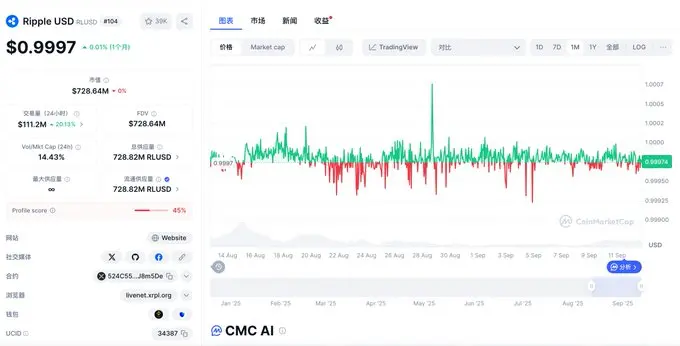
In Ethereum AAVE V3, we can see that providing RLUSD can yield an APR of 11.56%, where 1.08% of the yield comes from interest paid by RLUSD borrowers in AAVE, and this portion of the reward will automatically roll into the user's principal. The other 10.47% of the reward comes from Ripple's official subsidies to liquidity providers, which are distributed through the Merit Program and issued uniformly every two weeks. Users can actively claim these rewards on the Aave Chan Initiative Dashboard. Based on the author's observations, the subsidies have been ongoing for several months, indicating that this yield has been maintained for a considerable period. Participation in this scenario is also relatively simple; you just need to exchange for RLUSD on Curve and supply it to AAVE.
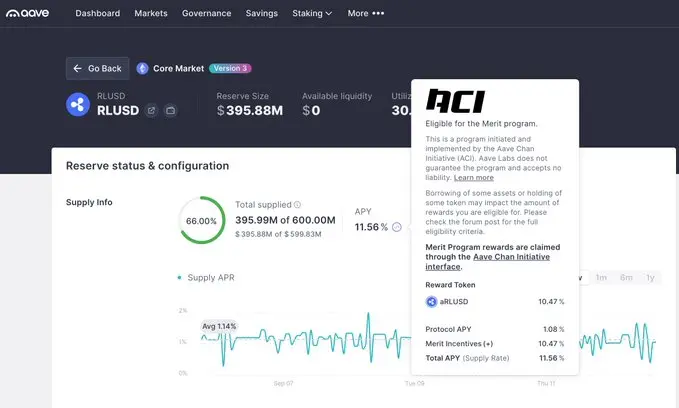
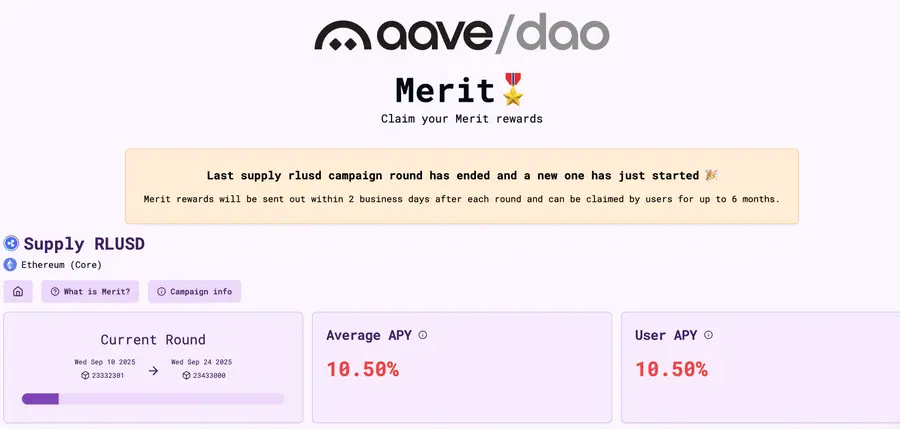
The second is providing the GHO stablecoin in Avalanche AAVE V3, which can yield a relatively consistent 11.8% APR. First, GHO is an over-collateralized decentralized stablecoin issued by AAVE. We have previously provided a detailed introduction to its specific mechanism, so we will not elaborate here. The collateral for GHO consists of blue-chip crypto assets designated by AAVE, and it relies on AAVE's liquidation mechanism to ensure the price stability of GHO.
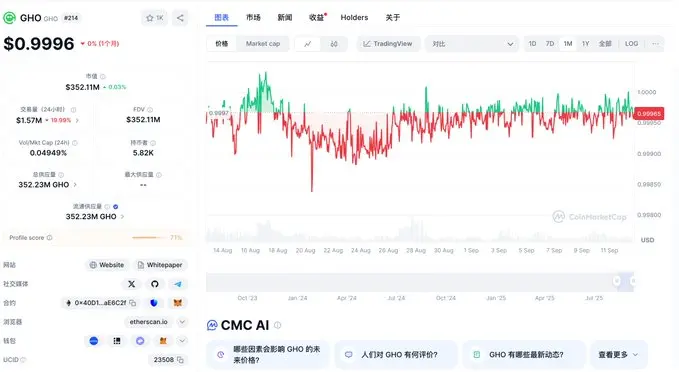
Avalanche is a high-performance L1. Although it is gradually falling behind in ecological construction, it has strong compliance resources behind it. Similar to RLUSD, the 11.8% APR obtained by providing the GHO stablecoin in Avalanche AAVE V3 is also composed of two parts: a 1.33% borrowing rate and a 10.47% yield from official AVAX subsidies. This portion is also distributed through the Merit Program and is issued uniformly every two weeks, allowing users to actively claim it on the Aave Chan Initiative Dashboard. The subsidies have also been ongoing for a considerable time. It is important to note that this reward is issued in the form of asAVAX, which is a deposit certificate for sAVAX in AAVE. sAVAX is a deposit certificate for staking AVAX in the leading Liquid Staking protocol BENQI within the AVAX ecosystem to participate in POS mining. If you wish to exchange this reward for other tokens, you need to perform an unstake operation through BENQI, and there is a cooling-off period of 15 days. Of course, this portion of the tokens is also an interest-bearing asset, yielding a 5% staking reward.
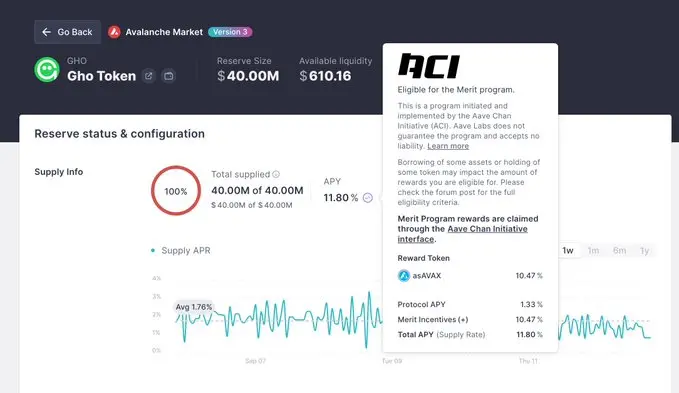
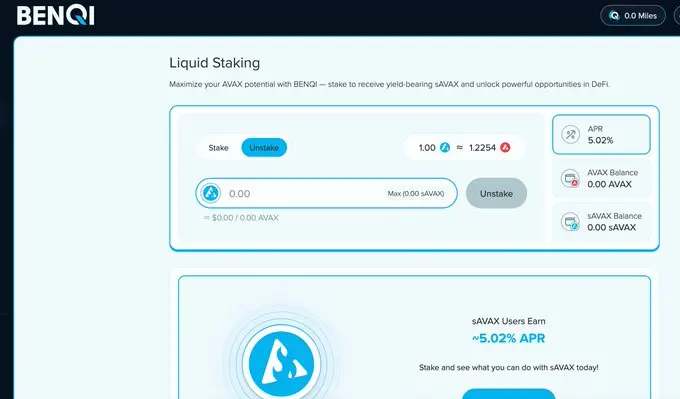
The author believes that these two stablecoin yield scenarios are quite suitable for DeFi newcomers and non-crypto working professionals, and everyone can participate cautiously.
免责声明:本文章仅代表作者个人观点,不代表本平台的立场和观点。本文章仅供信息分享,不构成对任何人的任何投资建议。用户与作者之间的任何争议,与本平台无关。如网页中刊载的文章或图片涉及侵权,请提供相关的权利证明和身份证明发送邮件到support@aicoin.com,本平台相关工作人员将会进行核查。




